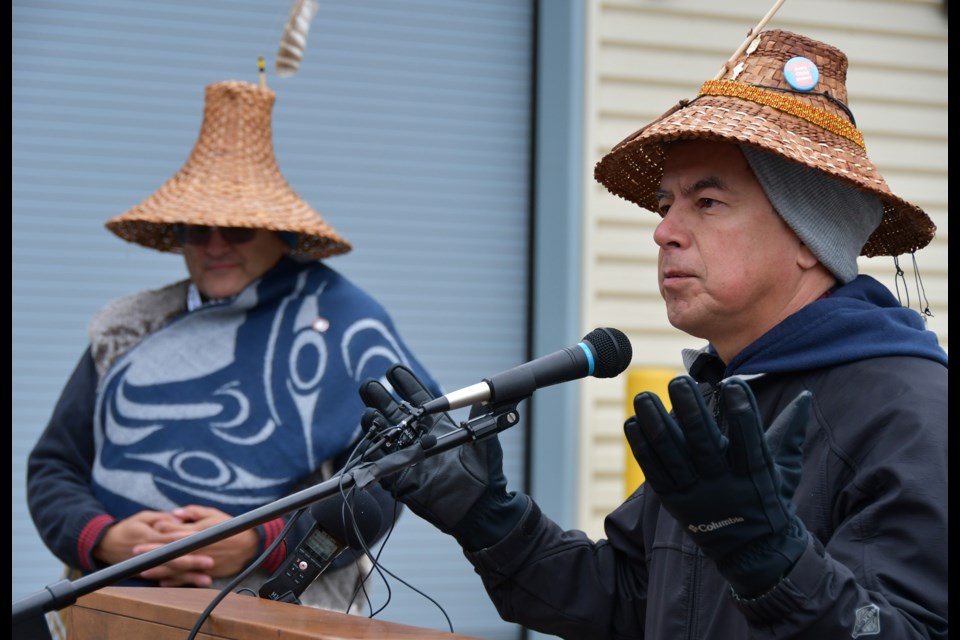A blessing and a ground breaking to signal the start of a new sockeye hatchery near the Coquitlam Dam brought tears to the eyes of members of the kʷikʷəƛ̓əm (Kwikwetlem) First Nation today (Nov. 10).
Councillors John Peters and George Chaffee wept as they spoke about the historical occasion in the heart of the Nation's ancestral, traditional and unceded territory of the watershed of the Coquitlam Lake.
skwƛ̓ əma:ɬ x̌ acaʔ, as the place is known in the Nation's language of Halkomelem, was where the kʷikʷəƛ̓əm First Nation had its winter village for centuries.
In fact, the Nation's name comes from the small red fish that once thrived in Coquitlam's waters. Legend has it that the Coquitlam River was once so full of the red fish (sockeye salmon) that you could walk across it, elders say.
But in 1887, the Coquitlam Lake water rights were sold to New Westminster and, two years later, the city installed a pipe from the lake to the Royal City.
In 1899, kʷikʷəƛ̓əm Chief Johnny wrote to the Inspector of Fisheries about the Nation's struggle to survive should the Vancouver Power Company (now BC Hydro) dam the Coquitlam Lake for hydro-electric power.
Construction started in 1902 and the dam was enlarged in 1911 — without provision for fish passage.
This morning, BC Hydro president and CEO Chris O'Riley acknowledged the harm done to the kʷikʷəƛ̓əm for wiping out their traditional "cupboard," which was made up of fish, deer and duck.
But the dam also damaged the relationship with the people of the land, he said. "We would do things differently today, 100 years later."
Chief Ed Hall said the new hatchery goes a long way toward reconciliation and he thanked the partners that helped to get the kʷikʷəƛ̓əm Sockeye Hatchery launched.
It is due to be up by next spring, close to the Coquitlam Water Treatment Plant, in a fenced-off area controlled by Metro Vancouver.
Read the Tri-City News' print edition on Thursday, Nov. 17, 2022, for the full story.





